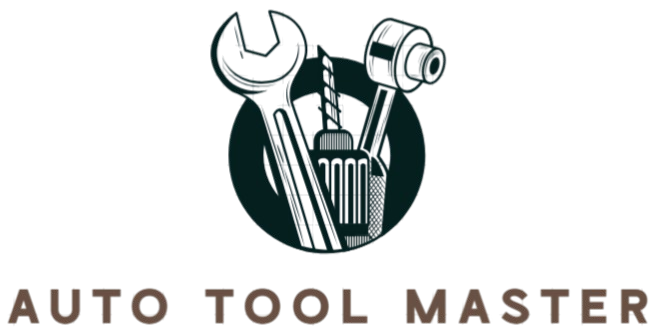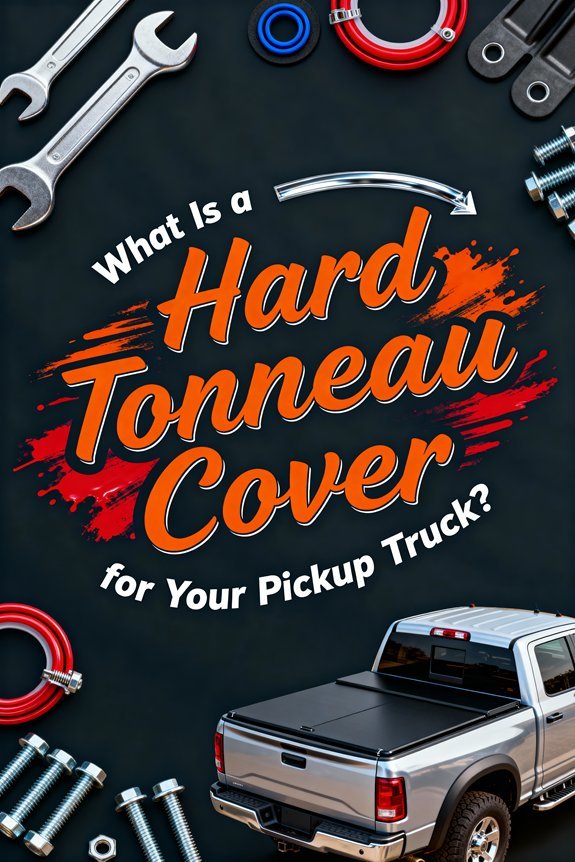To fix a damaged tonneau cover, start by identifying the specific issue: inspect seals for leaks, examine vinyl for tears, and check fasteners for wear. For leaks, remove deteriorated weatherstripping and install new EPDM seals after cleaning bed rails with rubbing alcohol. Repair tears using Tear Aid kits with backing patches and color-matching compounds. Replace worn Velcro strips by removing old rivets and securing new hook-and-loop fasteners. Lubricate hinges and locks with silicone spray to guarantee smooth operation. Understanding these repair techniques will help you restore your cover’s full protective capability.
Common Tonneau Cover Problems and Their Causes
While tonneau covers protect truck beds from weather and theft, they experience several recurring problems that impair functionality and durability. Sticking issues commonly result from inadequate lubrication on sliding rails, debris accumulation in tracks, or panel-to-rail misalignment. You’ll encounter resistance during operation when lock protectors remain installed or when rubber components deteriorate. Lock malfunctions occur from impacts, mishandling, or improper tailgate stopper clearance. Seal degradation from weather exposure and cleaning chemicals accelerates hardware corrosion and compromises fit. Installation problems stem from model incompatibility, creating gaps and operational noise. Material damage manifests as scratches, UV-induced brittleness, and hardware corrosion from neglected maintenance. Hard covers constructed from aluminum or fiberglass are particularly susceptible to dents and cracks from heavy impacts or improper handling. These issues compound when debris builds up around seals or when fittings aren’t properly secured, ultimately reducing your cover’s protective capabilities and lifespan. Leaking problems develop from tears and worn seals, allowing moisture to enter the truck bed and potentially damage cargo. Some damage may be severe enough to require complete replacement, with hard covers ranging from $500 to over $2,000 depending on materials and features.
Repairing Leaks and Replacing Weatherproof Seals
Leaks in your tonneau cover compromise cargo protection and signal deteriorating weatherproof seals that require immediate attention. Begin with thorough leak assessment by inspecting corners, aero flap undersides, and trim gaps where seal strips commonly fail. Look for peeling corners, warped frames, or displaced rubber sealing.
For emergency repairs, apply Gorilla Waterproof Tape or 3M Marine-Grade Sealant directly over leak points. Heating metal frames with a lighter improves tape adhesion; coating with petroleum jelly extends repair lifespan up to six weeks. Cut the tape at a 45° angle for cleaner application and better seal coverage.
Permanent fixes require removing worn seals and installing replacement weatherstripping—silicone strips cost approximately $4.50 per meter. Verify seal alignment under aero flaps and trim; misalignment creates persistent leaks. Clean bed rails thoroughly before pressing new seals into position, ensuring complete contact along all mounting surfaces. High-quality covers utilize EPDM seals for superior water resistance and durability. After completing seal replacement, apply specialized protectants to shield the new weatherstripping from UV rays and weather damage.
Fixing Tears in Soft Tonneau Covers
Weatherproof seals protect against moisture intrusion, but physical damage to the cover material itself demands different repair techniques. Begin by removing dirt, debris, and moisture from the damaged zone, then trim loose threads to guarantee clean edges. For vinyl or fabric tears, apply a backing patch on the underside using vinyl adhesive from auto supply stores. Patch materials should include color-matching compounds for aesthetic blending. Execute adhesive application sparingly and evenly, avoiding thick layers that cure slowly. Allow 24 hours for complete curing. Small fabric tears benefit from heavy-duty stitching reinforced with backing patches. Tear Aid kits offer Type A patches for fabric and Type B for vinyl, providing superior waterproofing compared to temporary solutions like duct tape. Vinyl repair kits from brands like 3M and Permatex provide cost-effective solutions specifically designed for automotive use. Soft roll-up covers made of vinyl or canvas are particularly susceptible to tears but remain popular due to their ease of use and full bed access. After completing repairs, apply UV-blocking sprays to protect the patched area from sun damage and extend the cover’s lifespan.
Velcro and Fastener Repairs
Velcro strips and fasteners serve as critical retention systems on tonneau covers, yet they’re among the first components to fail under regular use. Conduct fastener inspection regularly to identify fraying, corrosion, or mechanical failure before seal integrity deteriorates. When Velcro loses grip strength, initiate Velcro replacement by removing degraded strips—drill out rivets or cut away adhesive-mounted sections. Install new hook-and-loop fasteners using supplied screws or adhesives, ensuring proper alignment to prevent flapping and water infiltration. For damaged clamps, replace the entire assembly or individual clips depending on failure extent. Source OEM or aftermarket hardware from specialty retailers. Clean mounting surfaces thoroughly before installation to maximize adhesion. Use a rubber mallet to tap components into position without damaging plastic parts. Similar to installing weather strips under headache rack feet, placing protective strips between the tonneau cover and truck bed prevents scratching and improves seal performance. Tighten all mounting hardware using basic tools such as hex keys and screwdrivers to ensure components remain secure during operation. Test the repaired cover’s tension, closure mechanism, and weather seal post-installation to verify operational integrity.
Vinyl Replacement and Seal Reattachment
When vinyl fabric deteriorates or delaminates from the frame structure, you’ll need to execute a complete cover replacement to restore functionality and weather protection. Roll the existing cover open, remove mounting bolts from tension adjusters, and slide them away from side rails. Unroll the old cover on a clean surface with bars facing up, then align new vinyl alongside for reference. Detach storage strap brackets and slide bars off to prepare for installation. Align the front bar channel with the new vinyl hem, slide carefully while pulling slack, and secure with Phillips screws at each end. For vinyl care and reattachment to aluminum bases, HH-66 Vinyl Cement provides superior bonding compared to spray adhesive options. Replace weather-resistant EPDM seals along rail edges after thoroughly cleaning surfaces to guarantee ideal moisture resistance. When installing the rear bar, ensure equal extension at both ends and that the vinyl is pulled tight from side to side before securing with Phillips screws. Use rubbing alcohol on the truck bed surface before reattaching seals to remove any residue and ensure proper adhesion. A properly repaired tonneau cover with functional seals will keep cargo out of sight while providing improved weather protection and deterring potential theft attempts.
Preventive Maintenance Tips
Regular maintenance protocols extend tonneau cover service life and prevent costly repairs down the road. You’ll need to implement specific cover care routines based on your tonneau type. For soft covers, clean with mild soap and water, then apply rubber seal protectants to maintain flexibility. Hard covers require automotive-grade soaps and wax applications using soft sponges to prevent surface scratches. Retractable systems demand regular lubrication with silicone-based sprays and track debris removal. Folding covers need hinge and latch lubrication plus weather seal inspections.
These maintenance tips apply universally: inspect hardware monthly for corrosion or looseness, avoid harsh chemicals that damage vinyl or coatings, and store covers completely dry. Quality manufacturers like Gator design their heavy-duty covers with robust aluminum frames and thick vinyl tops that benefit significantly from proper care routines. Always operate covers according to manufacturer specifications, and address minor damage through professional repair services immediately. Regularly check and lubricate hinges, locks, and rails to ensure smooth operation and prevent mechanical failures. Keep cleaning routine consistent to ensure your tonneau cover maintains its protective properties and appearance over time.

